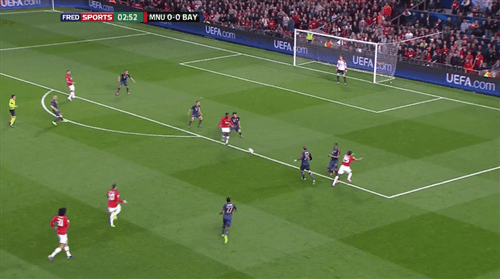How To Select A Position
For a newcomer or younger player, finding their fit on the pitch may seem intimidating — there are, after all, eleven different positions. However, there’s an easier way to figure out what position is your perfect fit is based on a set of criteria. Using an athlete’s desires or other sports background as an aid, it may become clear where he belongs on the pitch.
Despite a certain player’s wishes, a coach will do whatever it takes to better the team. So, in the end, picking a position in soccer is a combination of a few questions that must be asked. First off, what does your heart say? Then after that, what does your coach say? These answers will dictate your decision, ultimately.
Luckily enough, CoachUp has put together a list of things to consider in an attempt for players and coaches alike to put happy, confident and skilled athletes on the field in the right positions.

Traits
- Do you like to have the ball at your feet?
- Do you like to out-sprint defenders to long passes?
- Are you good at getting to the ball when it’s in the air?
- Do you like putting the ball in the back of the net or stopping it?
- Do you like controlling the game or impacting it in bursts?
- Are you comfortable with both feet?
- Do you shy away from contact?
These are all questions that require some sort of answer before proceeding. In one way or another, every player goes through a checklist like this in their mind– they just might not know it! Throughout youth soccer, players begin carving out an identity on the pitch from their very first moment. Whether or not they accept and settle into these roles they or a coach has created for them is another thing, but it happens nonetheless.
Try imagining yourself in the role, go ahead and daydream! What does your brain tell you?
Question Yourself
- Do you want to score? Congrats, you’re a striker.
- Do you want to assist? Hey, you might be a midfielder.
- Do you want to stop goals and attacks? You should consider trying defender/keeper.
Then, once you’ve answered that question:
- Do you have the traits and abilities to make that desire possible?
For example, say you fancy shutting out teams. You don’t need the ball to be happy and there’s a certain allure and pride behind keeping a clean sheet. But, if you hate heading the ball or making incredibly physical slide tackles, defending might not be your fit. Of course, any athlete with determined focus and resolve can eventually make any position fit, but these are all things to consider when initially deciding your course of action.

Formation
Once you realize the position(s) for which you are most suited, you have to see what formation the team uses. Find the position in the formation that matches what you want to play, and understand that it may actually have a different role than you expected. If you want to be a forward, for example, and the team uses a 4-4-1-1, you should talk to your coach about the role of the lone striker and the center forward who sits behind him.
The positions are both forwards but do different jobs for the team, so remember to use your specific skills to your advantage!
Be Flexible
Even more important than talking to your coach about positions is trusting his advice. The most important part of stepping up to a higher level of soccer is being flexible. Countless soccer players have stories about playing a certain position their whole life, reluctantly changing positions because of the needs of their team, and then having the best season of their career.
Tell your coach your preferred role, but make it clear that you are willing to play and work hard in any position. This mentality is many coach’s dream and will motivate them to put you on the field more often. Additionally, coaches may move players around as they see fit — this happens frequently, even at the professional level.
Some of the best examples even hail from here in the United States. Take DeMarcus Beasley who was moved from an attacking left-midfield position to a defensive slot in the USMNT. Or; take the sudden transformation of Jermaine Jones’ role with the team. Throughout his long career, with stops in Germany, England, and the US, Jones had always played in a defensive center midfielder role.
Often enough, the DM role is filled by a player that has a strong technical ability on the ball, quick on their feet and chatty with their mouths. Somebody who can provide consistent cover as a defender before the actual defensive back line comes into play. For the USMNT, Jones thrived in that role; in fact, he’s credited as a huge reason why the team was able to take a huge step forward over the last few years.
And yet, now post-World Cup 2014, Jones has found himself in a new role: center back. Jurgen Klinsmann has never been afraid to experiment with his players, but Jones has given the team a new flexibility. And, for Jones, a revival in a career with the USMNT that might have ended otherwise.
(Related: Read about being a free kick specialist here.)
Huddle Up
Specializing in the skill set of a certain position is a good idea, because, if nothing else, it will improve your overall ability. It’s just an added bonus when the flexibility allows you to play different positions. When you prove to the coach that you can play in different roles and scenarios, it will be that much harder to keep you off the pitch in the long run.
If you love soccer but still haven’t picked a permanent position to train in, consider booking one of CoachUp’s private trainers to help you out. They’ll have you set straight on the field and in your mind in no time! What are you waiting for?
How useful was this post?
Click on a star to rate it!
Average rating 3 / 5. Vote count: 1
No votes so far! Be the first to rate this post.




